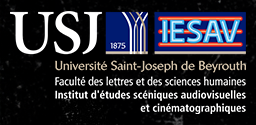Regards
Keywords
Dioptric Arts, Body’s path, Haptic camera, Moving body, Lebanese cinema, War and post-war cinema
Document Type
Article
Abstract
The human body always attracts and fascinates Arab filmmakers, that is why it is considered as an agglomerate of signs, which usually reveals the social and political instability of a nation. In the Lebanese cinema, the body representations are controversial and related to war themes. The men’s body becomes the screen and the receptacle of the violence when it exhibits its wounds and scars, while the moving women’s body holds within itself the early signs of safeguards. The moving women’s body is also correlated to the space that determines its trajectory. Beirut city emerges then as a huge body in ruins, that needs to be reconstructed. Sometimes, the filmmakers personify the city and project an image of its strangest mutations. How do the different configurations of the human body introduce little stories in the collective memory of Lebanon?
Résumé
The human body always attracts and fascinates Arab filmmakers, that is why it is considered as an agglomerate of signs, which usually reveals the social and political instability of a nation. In the Lebanese cinema, the body representations are controversial and related to war themes. The men’s body becomes the screen and the receptacle of the violence when it exhibits its wounds and scars, while the moving women’s body holds within itself the early signs of safeguards. The moving women’s body is also correlated to the space that determines its trajectory. Beirut city emerges then as a huge body in ruins, that needs to be reconstructed. Sometimes, the filmmakers personify the city and project an image of its strangest mutations. How do the different configurations of the human body introduce little stories in the collective memory of Lebanon?
Recommended Citation
Maroun, Noha
(2020)
"Du corps écran à la ville corps,"
Regards: Vol. 23:
No.
23, Article 4.
Available at:
https://e-journals.usj.edu.lb/regards/vol23/iss23/4
Included in
Comparative Literature Commons, Creative Writing Commons, Film and Media Studies Commons, Fine Arts Commons, Theatre and Performance Studies Commons


